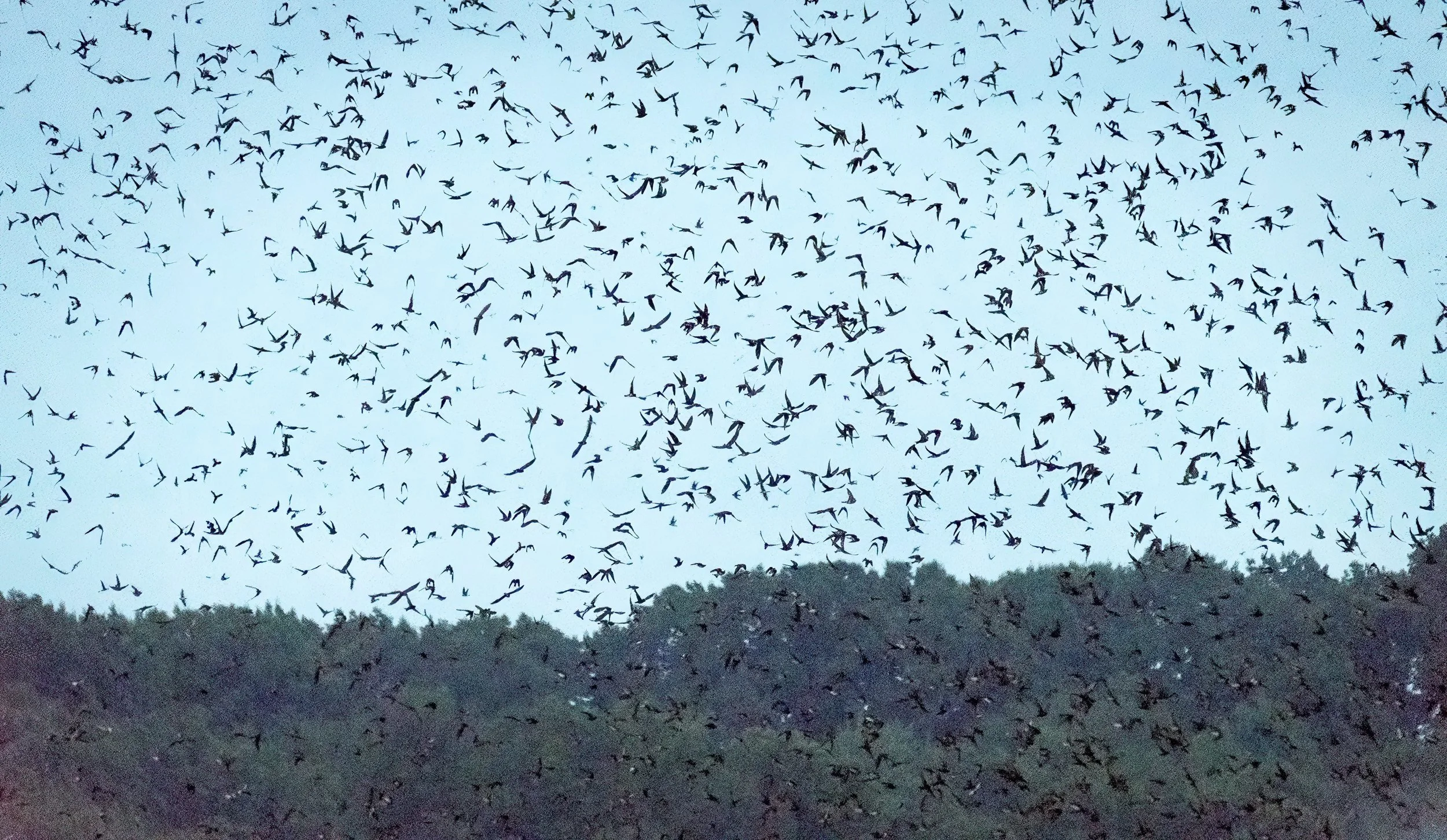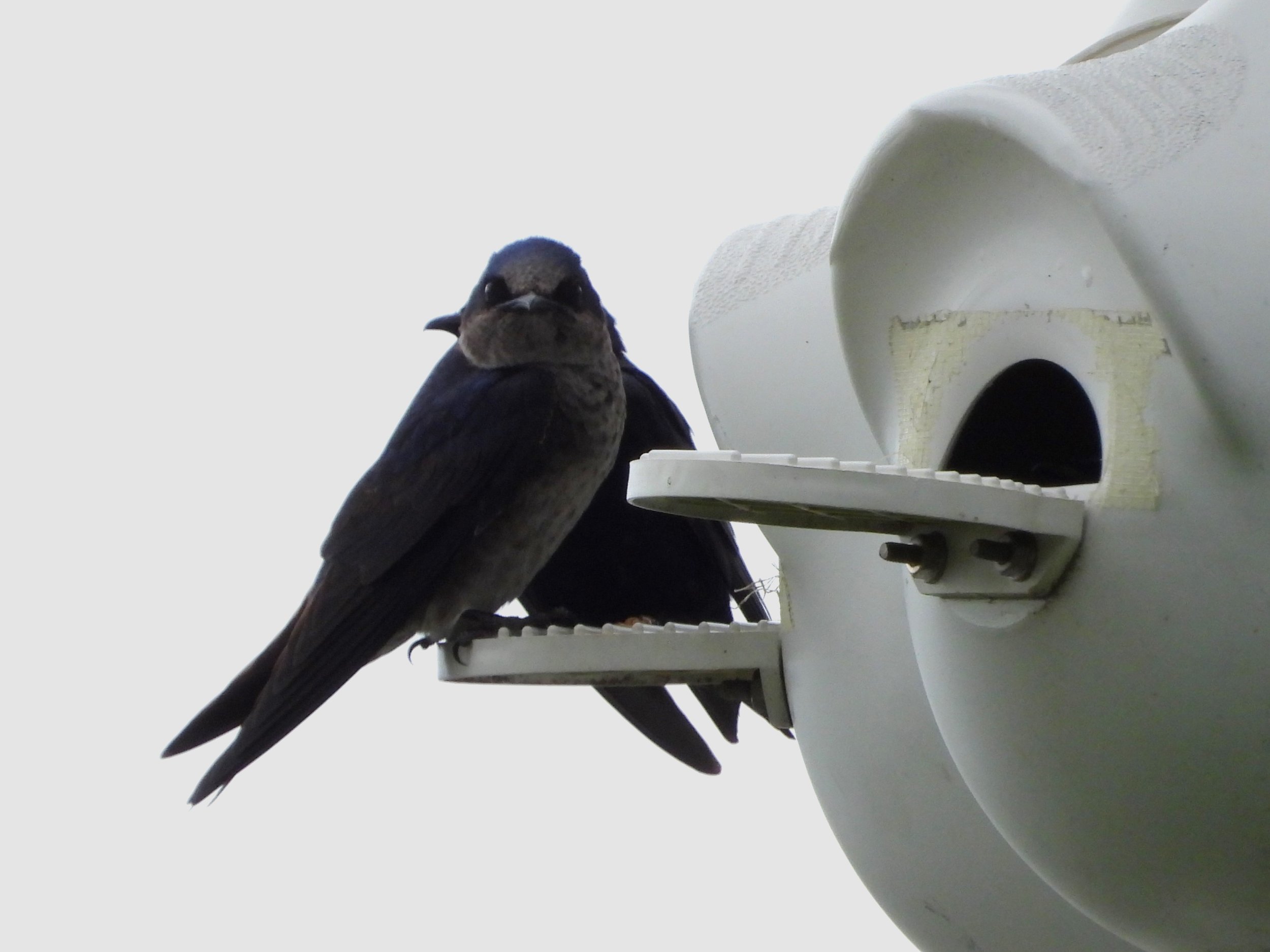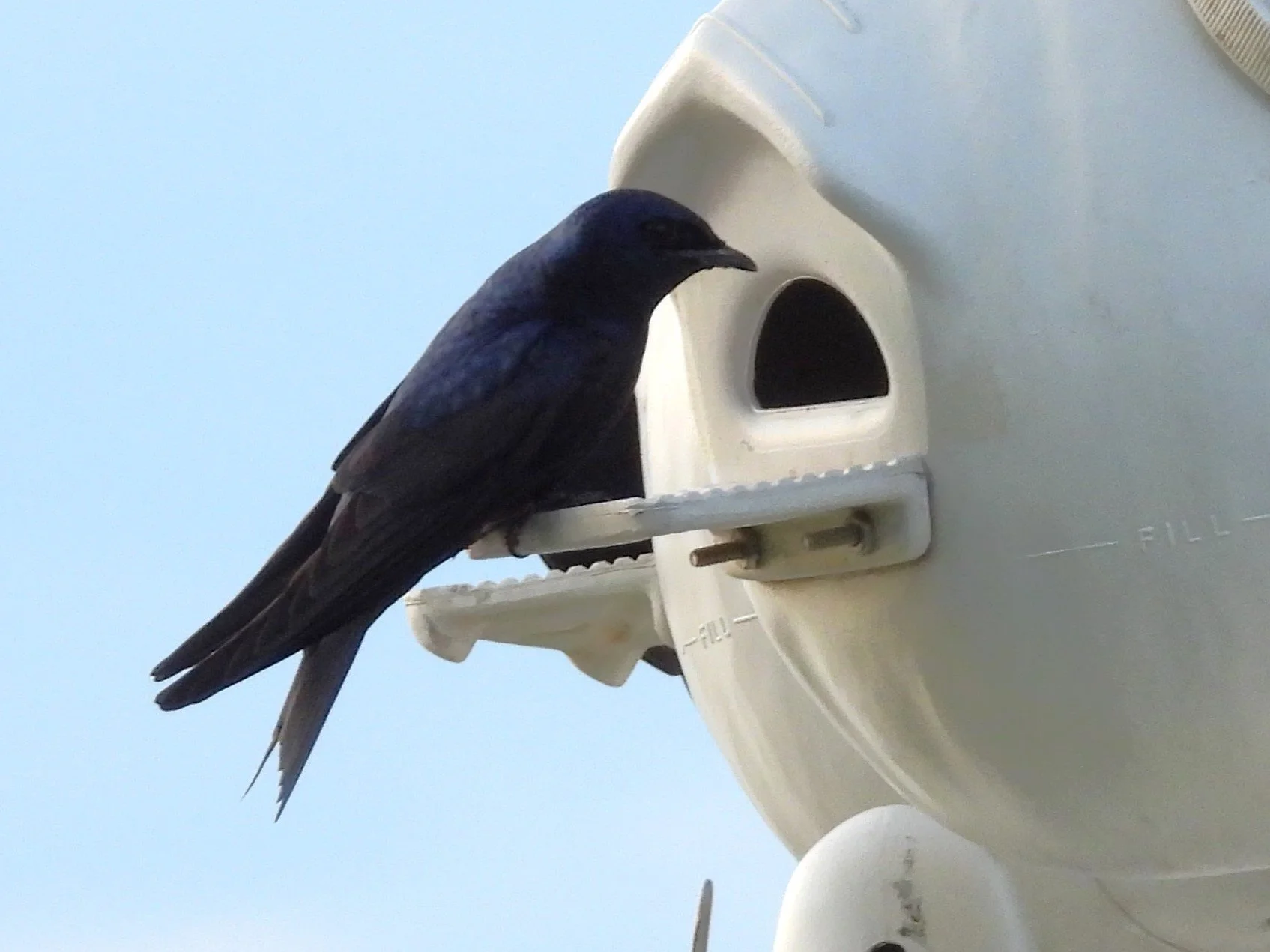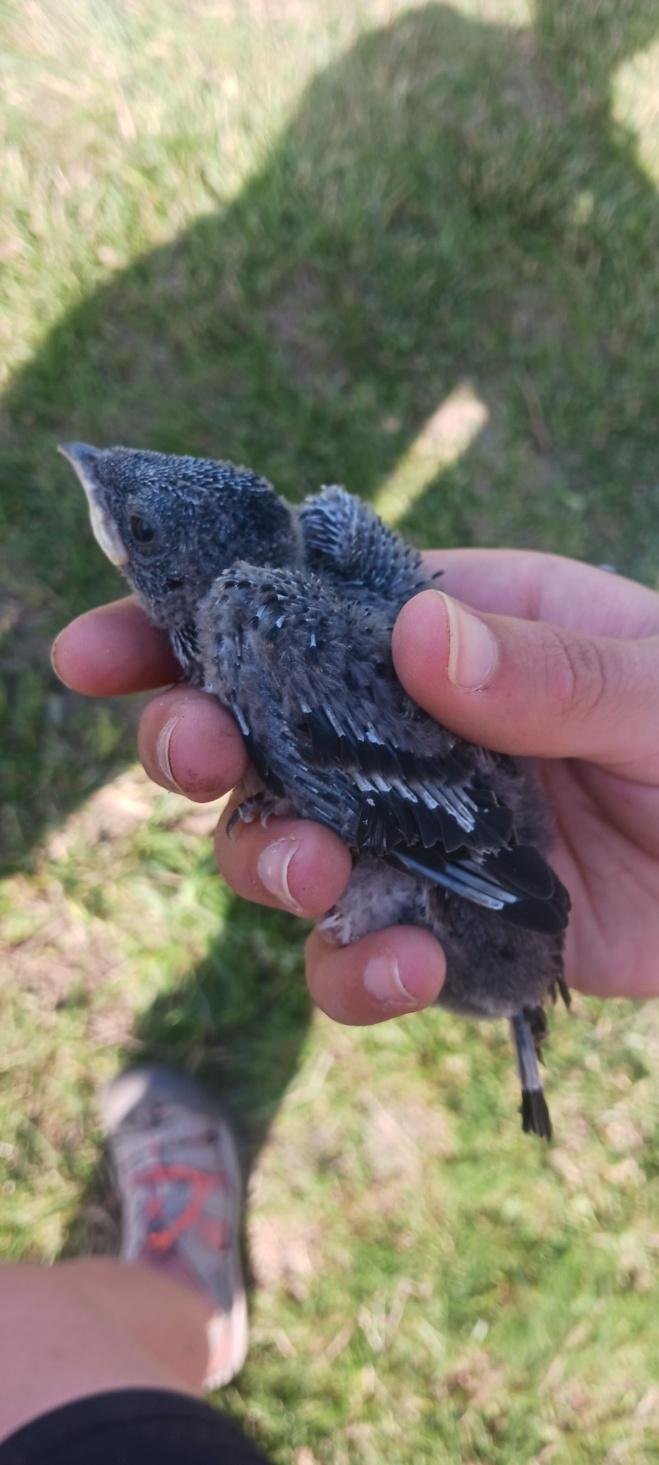Purple Martin Conservation Program
Puprple Martin Conservation
Black River Audubon Society is proud to support the conservation of Purple Martins, one of Ohio’s most beloved and beneficial songbirds. These striking, social swallows depend almost entirely on human-provided housing in our region.
Purple Martins in Lorain County
We maintain thriving colonies at several locations: Lakeview Park in Lorain, Mill Hollow in Vermilion, the Oberlin Preserve, and Wellington Reservation. Each spring and summer, our volunteers monitor and care for these nest sites to ensure the birds have safe, welcoming homes to raise their young. By providing housing and promoting awareness, we help sustain healthy Purple Martin populations for future generations to enjoy.
About Purple Martins
The Purple Martin (Progne subis), North America’s largest swallow, has long captured the hearts of bird lovers with its graceful flight, cheerful song, and shimmering purple-black plumage. These birds are aerial insectivores, spending their days swooping through the sky in pursuit of mosquitoes, flies, and other insects, providing natural pest control for neighborhoods and parks alike. Their presence is more than just a delight — it is also a reminder of how closely the well-being of wildlife can depend on us.
Purple Martins are migratory, traveling thousands of miles each year between their wintering grounds in the Amazon Basin of South America and their breeding grounds across the eastern and central United States. They usually arrive in Ohio in April and remain through late summer before departing in August for their long southward journey. Martins nest in colonies, raising one brood per year, with the female incubating a clutch of 4–6 eggs while the male stands watch and helps feed the young once they hatch. By mid-summer, fledglings take to the sky, learning to feed themselves before gathering in great pre-migratory flocks.
What makes Purple Martins particularly unique is their unusual dependence on humans — a relationship that has developed over centuries. Historically, Native Americans hung hollow gourds to attract martins, recognizing their insect-eating benefits and enjoying their proximity. Over time, martins in the eastern U.S. became entirely reliant on artificial housing, abandoning natural tree cavities and rock crevices in favor of human-provided nesting sites. Today, virtually all martins east of the Mississippi nest exclusively in man-made structures: multi-compartment houses, poles with gourds, and other creative designs maintained by dedicated “landlords.”
This dependence makes them one of the few wild bird species whose survival in much of their range is tied directly to human stewardship. Without well-maintained housing, many colonies would simply disappear. Landlords play a critical role by cleaning and preparing houses before spring arrival, monitoring nests for predators and invasive species like European Starlings and House Sparrows, and ensuring adequate food and safe conditions through the nesting season.
At Black River Audubon Society, we proudly manage thriving Purple Martin colonies in Lorain, Vermilion, Wellington, and Oberlin. Our volunteers regularly check and care for these sites, providing both the shelter martins need and the maintenance that ensures their success year after year. The results are both visible and audible — the lively chatter of martins filling the air as they raise their young and help keep insect populations in check.
Protecting Purple Martins is about more than preserving a species. It’s about honoring a centuries-old partnership and recognizing our shared responsibility in maintaining healthy ecosystems. By supporting martin conservation — whether through volunteering, providing housing, or simply learning more — we can each help ensure these beloved birds continue to grace our skies for generations to come.
Get Involved!
Interested in purple martins and participating in the Black River Audubon Purple Martin program? Click on the volunteer button to contact the program chair, Meena Poe.
““Purple Martins remind us that even the smallest creatures depend on our kindness to thrive.””
The Marvel of Purple Martin Migration
Purple Martins are among North America’s most impressive long-distance migrants, traveling up to 5,000 miles each way between their breeding grounds in the United States and their wintering areas in the Amazon Basin of South America. Their journey is not only remarkable for its distance but also for the spectacular gatherings they form along the way. In late summer and early fall, before departing for the tropics, martins congregate in enormous communal roosts at stopover sites — sometimes numbering in the tens or even hundreds of thousands of birds. At dusk, these flocks create mesmerizing aerial displays as they swirl through the sky, a breathtaking natural spectacle for anyone lucky enough to witness it.
Some of the largest roosts in the world have been recorded in the southern United States, especially in states like Texas and Louisiana, where well over a hundred thousand martins may converge in one location. One famous site near Austin, Texas, draws crowds of people each summer to watch more than a quarter-million birds gather before their long migration. These communal roosts play a critical role in the birds’ migration strategy, offering safety in numbers and ideal staging areas to rest and refuel. The sight of these vast colonies — a testament to the martins’ resilience and the strength of their centuries-old relationship with humans — remains one of the most inspiring wildlife phenomena on the continent.
Resources for Purple Martin Conservation
Purple Martin Conservation Association (PMCA)
The leading organization dedicated to the study, conservation, and management of Purple Martins. Great for beginners and experienced landlords alike — includes guides, nest monitoring tips, and forums.
https://www.purplemartin.org
Cornell Lab of Ornithology – All About Birds: Purple Martin
Comprehensive species account with life history, sounds, range maps, and more.
https://www.allaboutbirds.org/guide/Purple_Martin
Audubon Field Guide: Purple Martin
Basic natural history, identification tips, and conservation status from National Audubon Society.
https://www.audubon.org/field-guide/bird/purple-martin
NestWatch: Purple Martin Nest Monitoring Guide
Learn how to monitor nests safely and effectively while contributing data to citizen science.
https://nestwatch.org/learn/all-about-birdhouses/birds/purple-martin/
“ “Housing a martin is a small act of conservation with a big return — the beauty of birdsong, the wonder of flight, and the knowledge you’ve helped nature.””
